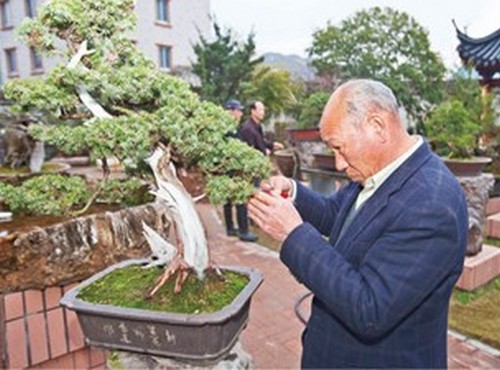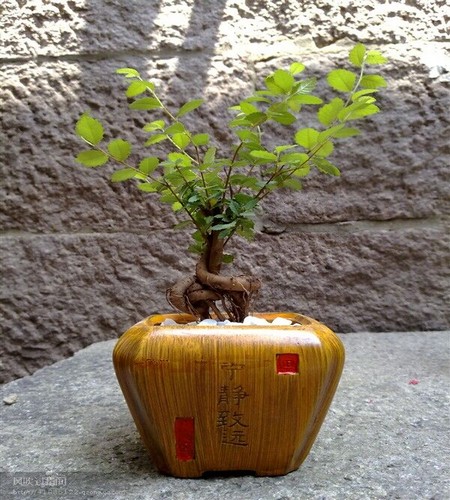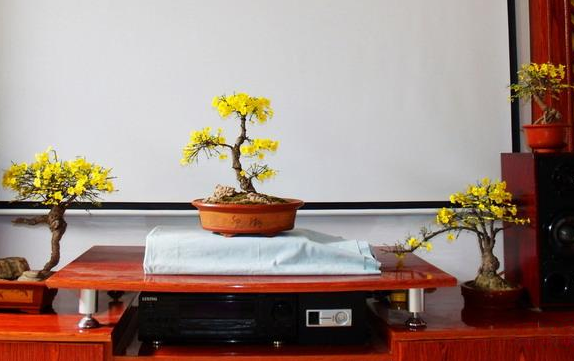Modeling method of juniper bonsai
The so-called juniper shape, that is, through the production process of binding, tying, twisting, pinching, pulling, thinning, and shearing, a plain juniper is made into a vibrant shape, such as lion, tiger and other animals; pavilions, buildings, and other buildings; aircraft, rockets and other popular science shapes. The shapes of these short ones are about feet and the ones a few meters high. If these shapes are combined again, such as a juniper cypress, the tree body is made into a dragon, and the top is made into a Phoenix flying with wings, it becomes a picture of "auspicious dragon and Phoenix". In this way, it can stimulate people's interest in appreciation. The author has been engaged in juniper modeling for more than 20 years, and now I will briefly talk about its production essentials here.

First, modeling time. According to the growth habits of juniper, it can be modeled all the year round, but according to its sprouting and drawing new branches in spring and autumn, the shape is especially best in spring and autumn.
Second, choose trees. The selection of tree type is particularly important in the process of juniper modeling. Choose those luxuriant plants with dense velvet branches, tender needles and full crowns. The shape made by Xuan Wang plant is plump and exuberant, while the shape made by the old plant is withered and weak. Therefore, the quality of juniper shape depends on the tree potential. In addition, we should also pay attention to the shape around the shape in the selection of the tree. For example, if you want to make horizontal and wide shapes such as elephants and trains, you must choose trees with low body and wide crown; if you want to make round shapes such as pandas and airplanes, you must choose trees with round crowns; and if you want to make vertical shapes such as flat dragons and pagodas, you have to choose tall trees.
Third, layout. After selecting the right tree, start to review the tree according to the shape you want to make. Shape which part is prominent or sunken, which part uses more branches, which part uses less branches, and initially carries on the layout on the crown. Such as the animal shape, where is the head, where is the leg, where is the tail, like an article, there is roughly a manuscript. Through reasonable layout, it is easy to make and use freely.
Fourth, production. The specific process of making juniper shape includes the steps of first head and then tail, first tail, first up, then down, first down, and then up; calculation, fixing and other operations; binding, binding, twisting, pinching, pulling, cutting, thinning and other processes.
(1) steps.
1. Start first and end later. In the production, first start from the beginning, then make the body, and finally finish the tail. The modeling of this step is mainly animal modeling and so on.
2. First, end, then head. First make the tail, and then gradually advance to the first part. The shapes of this step are lion, tiger, elephant, bear and so on.
3. Go up first and then go down. Start from the top, and then finish the styling at the bottom. The modeling of this step mainly includes character modeling and so on.
4. Go down first and then go up. Start from the bottom and make it up gradually. The shape of this step is tower, pavilion, dragon column and so on.
(2) operational research.
1. Calculation. Before making, according to the crown, first calculate the data of each part of the shape, such as head volume, body length, leg height, waistline and so on.
2. Fixed frame. The important parts of each juniper shape are inseparable from the fixing frame, and often the key part is to fix the frame under the tree first, and then tie the velvet branches to the skeleton after fastening the tree. Some shapes require skeletons all over the body, such as towers, pavilions, pavilions and so on. The binding of the fixed frame can be made by binding according to the size of the shape and simulating the outline of the modeling part.
(3) working procedure.
Binding, kneading, pulling, shearing and so on are the most meticulous and dexterous links in the whole production process. Animal shape of standing, sitting, running, jumping, etc., should rely on this link to make it vivid and lifelike.
1. Tie the scattered branches together with hemp rope or nylon rope to highlight the modeling part.
2. Tie and tie the cashmere branches in order with fine strands (2mm to 2mm), showing a plump and round shape.
3. Twist, branch bias, twist use.
4. Pinch, bend the branches as needed and bend the straight branches.
5. Pull, pull a branch from one place to another for use.
6. Thinning, thinning away redundant and useless branches.
7. Cut, the modeling is over, and the whole body is trimmed.
To make a good juniper shape, you should see more, practice more and deliberate more. I hope that the broad masses of enthusiasts will make joint efforts to make juniper modeling, an ancient folk art, shine more brilliantly.
Time: 2019-06-12 Click:
- Prev

Cultivation of Elm Bonsai
Ulmus pumila usually sows and propagates. From October to November, the seeds are ripe and the fruit wings are yellowish brown. They should be harvested in time, spread out and dried, sundries removed and stored in bags. Sowing, sowing or strip sowing in March of the following spring. The row spacing of strip sowing is 25 cm, sowing on a windless and sunny day, covered with fine soil, so as to see no seeds.
- Next

Propagation and cultivation of primrose bonsai
Primrose, also known as Jinmei and Little Yellow Flower, gets its name because it blossoms earliest among flowers and ushered in spring when a hundred flowers bloom immediately after flowering. Together with plum blossoms, daffodils and camellias, they are called four friends in the snow, and they are one of the precious flowers in China. Primrose is not only beautiful in color and extraordinary in temperament, but also has no fear of cold and majesty and no choice of style and land.
Related
- Fuxing push coffee new agricultural production and marketing class: lack of small-scale processing plants
- Jujube rice field leisure farm deep ploughing Yilan for five years to create a space for organic food and play
- Nongyu Farm-A trial of organic papaya for brave women with advanced technology
- Four points for attention in the prevention and control of diseases and insect pests of edible fungi
- How to add nutrient solution to Edible Fungi
- Is there any good way to control edible fungus mites?
- Open Inoculation Technology of Edible Fungi
- Is there any clever way to use fertilizer for edible fungus in winter?
- What agents are used to kill the pathogens of edible fungi in the mushroom shed?
- Rapid drying of Edible Fungi

